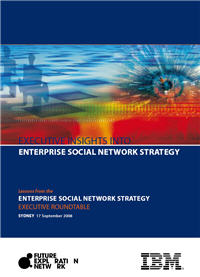Who is going to take the lead in corporate virtual worlds?
Since virtual worlds commenced, the promise of using virtual worlds in corporate settings has been evident. The first wave of business involvement in virtual worlds was primarily about marketing and customer engagement – I have written about marketing in virtual worlds and was interviewed on ABC TV about virtual advertising.
From here, a key focus will be how to use virtual worlds for meetings. I have no doubt that in the next decade it will be extremely common to hold meetings in virtual worlds. However those virtual worlds will be a world ahead of what we have experienced so far, being closer to merging high-bandwidth telepresence conferencing with the experience of immersion in a room of people from different locations.
Second Life essentially hasn’t gained ground for eighteen months, maintaining a dedicated core of users, but gaining few new users. The latest news is that Reuters is pulling out its Second Life reporter. Eric Kangel, who used to play that role as Eric Reuters, has some solid advice for Linden Labs on how to grow, including the interesting suggestion to ‘abandon the idea that Second Life is a business app,’ mainly because Second Life is not robust enough for enterprise use.
Since Second Life has been experiencing it’s well-known challenges, I have expected that new companies would emerge to take the vanguard of corporate virtual worlds. This is not to write off Second Life quite yet, which recently launched a corporate meeting offering, but the odds are in favor of new participants taking the lead in this space.
Some of the emerging companies that are looking promising include:

